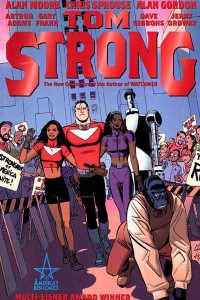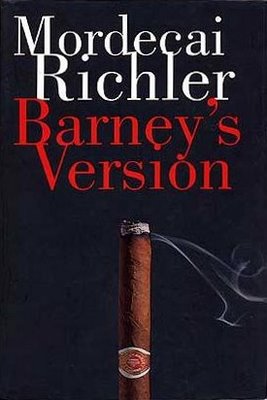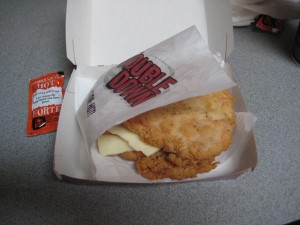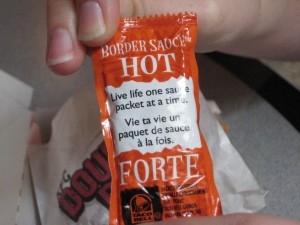Review: Ubisoft’s Battle Tag
 Another one of my video game reviews went on the Canadian Press wire today.
Another one of my video game reviews went on the Canadian Press wire today.
This time was slightly different though. Although the game was produced by Ubisoft, a well-know video game developer, "Battle Tag" is a toy, albeit one that plugs in to your home computer.
I had a blast lot of fun writing this piece. How could I not? After all, I got to play laser tag with my fiancee and got paid for it. Anyway, follow the link below to read the whole thing for yourself.
"Motion capture technology in video games has been a theme this holiday season.
Platforms like the XBox and PlayStation 3 have put out new peripherals with motion sensitive controllers or cameras, forcing gamers to get up off the couch and get physically active.
Ubisoft's "Battle Tag" takes this trend a step further, using a home computer as an automated umpire that organizes and scores laser tag games for kids." - from the Winnipeg Free Press
Sandwich Review: KFC’s Double Down
It took months to make it possible, but yesterday I finally ate a Double Down from KFC.
Normally, reviwing a sandwich is not my bag. After all, my good friend and neighbour John already does a bang-up job over at In Search of a Sandwich. Why would I want to compete?
But the Double Down - KFC’s bacon, sauce and cheese sandwich that substitutes the bread for pieces of deep-fried chicken - transcends a normal sandwich. Just as the Double Down pushes the envelope of sandwich technology, I must expand my blogging horizons for this fast food delicacy.
Not since the Earl of Sandwich put meat between two pieces of bread has a sandwich created so much buzz.
The novelty of the breadless sandwich coupled with the thrilling sense of danger that accompanies each sodium-filled bite has made the Double Down into something of a pop culture phenomenon, with people proudly announcing on Facebook or Twitter their desire to consume the grease-laden treat, often accompanied by photo galleries shortly thereafter.
Diana Mehta, my colleague at the Canadian Press, wrote an excellent feature story on the Canadian debut of the Double Down, including the many health risks associated with downing one of these bad boys.
I’ll skip all the warnings from nutritionists though, since I’d like to think my readers are smart enough to know that two pieces of fried chicken with bacon, cheese and special sauce stuck between them isn’t good for you, and move on to the review.
I travelled up to York University campus for my Double Down, purchasing my lunch from the combination KFC/Taco Bell at the school’s food court.
My eating companions were my fiancé Katy and her co-workers Andrew and Rachel. It was clear that we weren’t the only ones feeling adventurous that day: the outlet had the longest line in the entire food court.
After a pretty lengthy wait each of us sat down to our Double Downs and Pepsis.
The first bite was, predictably, very greasy and hot although it really did taste good. After the second bite though, the overwhelming saltiness of the Double Down became a problem.
Fortunately, Katy had picked up some hot sauce for us to dip our sandwiches into and the spice really helped cut through the savouriness of the sandwich. I’d definitely recommend having some hot sauce to anyone trying the Double Down for the first time. The added heat makes it much more palatable.
About three-quarters of the way through my sandwich I had a gut-check. Was I going to make it through? My body was already starting to feel uncomfortable with the mess I was forcing it to digest. But I looked at the wad of meat in my hand and decided that although I might regret it, I was still hungry and could easily put the rest of the chicken and bacon away.
I was right. In fact, when Katy struggled to finish hers, I was able to eat that too.
This sampling had been a long time coming. Katy and I actually had “Eat a Double Down” on our itinerary during our road trip to New York City and Boston this past summer. Unfortunately, we could not find a KFC, and so we had to wait for the Canadian release.
That delay probably created an unfair sense of expectation, but we came to an inescapable conclusion: the Double Down is a bit of a disappointment.
Don’t get me wrong, it really is quite tasty, if a bit too salty. But when I was done my sandwich I was actually still hungry. I regretted the fact that I didn’t order a combo. I could’ve used the fries to complete the job started by the Double Down.
Further, it’s really expensive. The sandwich by itself is $6.99 before tax. I can get a more filling – and healthier – meal from countless fast food chains, so why would I eat the Double Down, aside from the novelty?
I’m sure I’ll have it a few more times, undoubtedly as part of a full combo meal with some hot sauce to dip the sandwich into, but I can’t imagine that the Double Down is going to be a success in Canada.
Graphic Novel Review: Tom Strong by Alan Moore and Chris Sprouse
 Every medium has its strange little quirks. Odd little rules of the form that have developed and that creators rarely deviate from.
Every medium has its strange little quirks. Odd little rules of the form that have developed and that creators rarely deviate from.
For example, it is rare for a movie to have a plot that unfolds in real time. Television shows are limited in length by half-hour increments, allowing, of course, for commercials. You may see a program that’s 15 minutes long, but never 45 minutes.
It’s theoretically possible to have a show be 20 minutes long or a movie that is in real time, but it’s rarely if ever done in practice.
Comic books are no different. They have their own rules and standards that creators are obliged to follow.
One of the most peculiar things about sequential art as a medium is that it is largely devoted to a single genre – superhero action/adventure.
There are certainly lots of comics that do not involve capes or tights. But the vast majority of the comics produced in this medium prominently feature superheroes.
It wasn’t always this way. In the aftermath of the Second World War, superhero titles began to disappear off the rack. Only Batman, Superman and Wonder Woman survived in any form. Titles like Captain America, Captain Marvel and Green Lantern were replaced by Westerns, Romances and especially horror books.
However, as the Silver Age dawned with Showcase #4 and Fantastic Four #1, superheroes came back in to vogue. DC and Marvel plunged into producing cape and tights stories almost whole hog. Even characters that were of other genres like Nick Fury, Jonah Hex, Mille the Model, Patsy Walker and the Two-Gun Kid were folded into their mainstream continuity.
Since then, the medium and the genre have been inexorably linked. Sure, there are still some comics that do not feature superheroes, but they are few and far between.
It would be like if CBS and NBC’s programming was almost entirely police procedural dramas.
All this serves a lengthy preamble to talk about Alan Moore’s America’s Best Comics, an attempt by the famed author to break free from the superhero genre. He introduced books like Top 10, Promethea and Greyshirt that were departures from the usual comic book fare.
The most prominent work in the ABC line was Tom Strong, an analog of Doc Savage, Tarzan, Tom Swift and other pulp-styled heroes of the early 20th century.
Although still definitely an action-adventure story, Tom Strong is not a crime fighter or vigilante of any sort. His primary interest is science and education. He’s constantly inventing Swiftian devices that, predictably, become useful in his latest adventure. He is a utopianist devoted to improving his world.
Of course, Strong is often beset by villains who want to destroy his hometown of Millennium City or kill him to avenge an earlier defeat. Enemies like Nazi air pirate Ingrid Weiss, technological plague the Modular Man and Strong’s arch-nemesis Paul Saveen plague the hero and his family.
They’re all fun, off-beat characters that can make you laugh while remaining threatening to the safety of Tom Strong and his extended family.
As always, Moore does a fantastic job of developing characters quickly and creating entertaining traps for Strong to unravel, all while maintaining the traditional sense of fun inherent in all pulp fiction.

Chris Sprouse's incredible work on Tom Strong. Tom Strong is conceived as Pneuman the Pneumatic Man watches on.
Chris Sprouse’s artwork shines. It’s crisp, clean and expressive, while being remarkably detailed where required. He’s a master illustrator who can communicate emotions to his readers in a single, textless panel. It’s some of the best artwork I’ve ever seen in a comic.
Sprouse isn’t the only penciler on this series though. Other acclaimed artists like Arthur Adams, Gary Frank, Dave Gibbons and Jerry Ordway lend a hand. Their inclusion in the project was done in a very clever way – they draw all the flashback scenes. Because these looks into Tom Strong’s past are presented as older issues of the series, the different styles aren’t jarring and, if anything, add to the whole piece.
I would recommend Alan Moore’s Tom Strong to anyone who enjoys comics, but especially to those who want a break from the more mainstream and mundane superhero books that clutter shelves at your local shop. He remains one of the few creators in the medium that can shed the cloak of superheroes.


